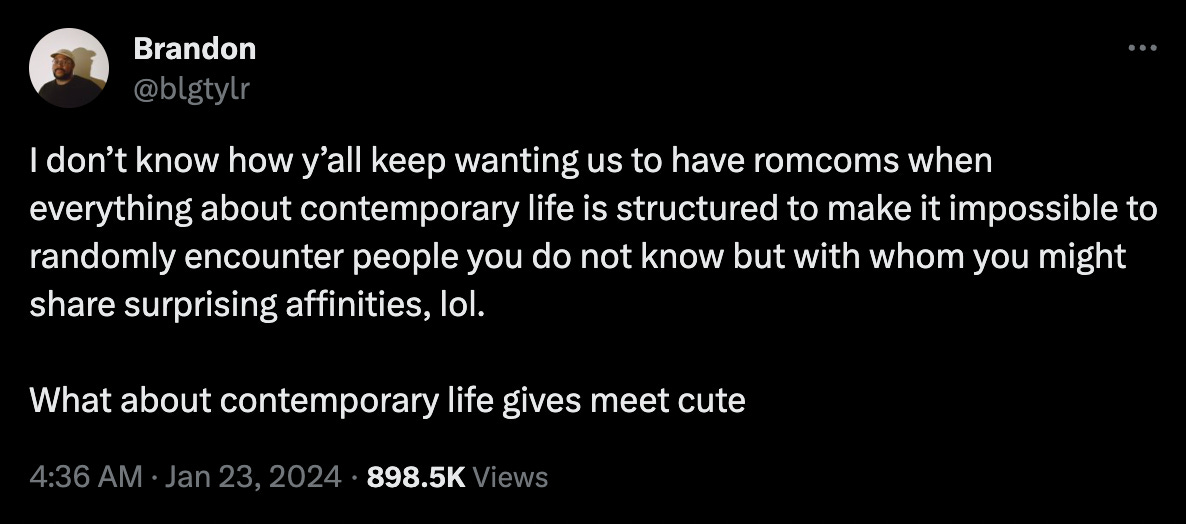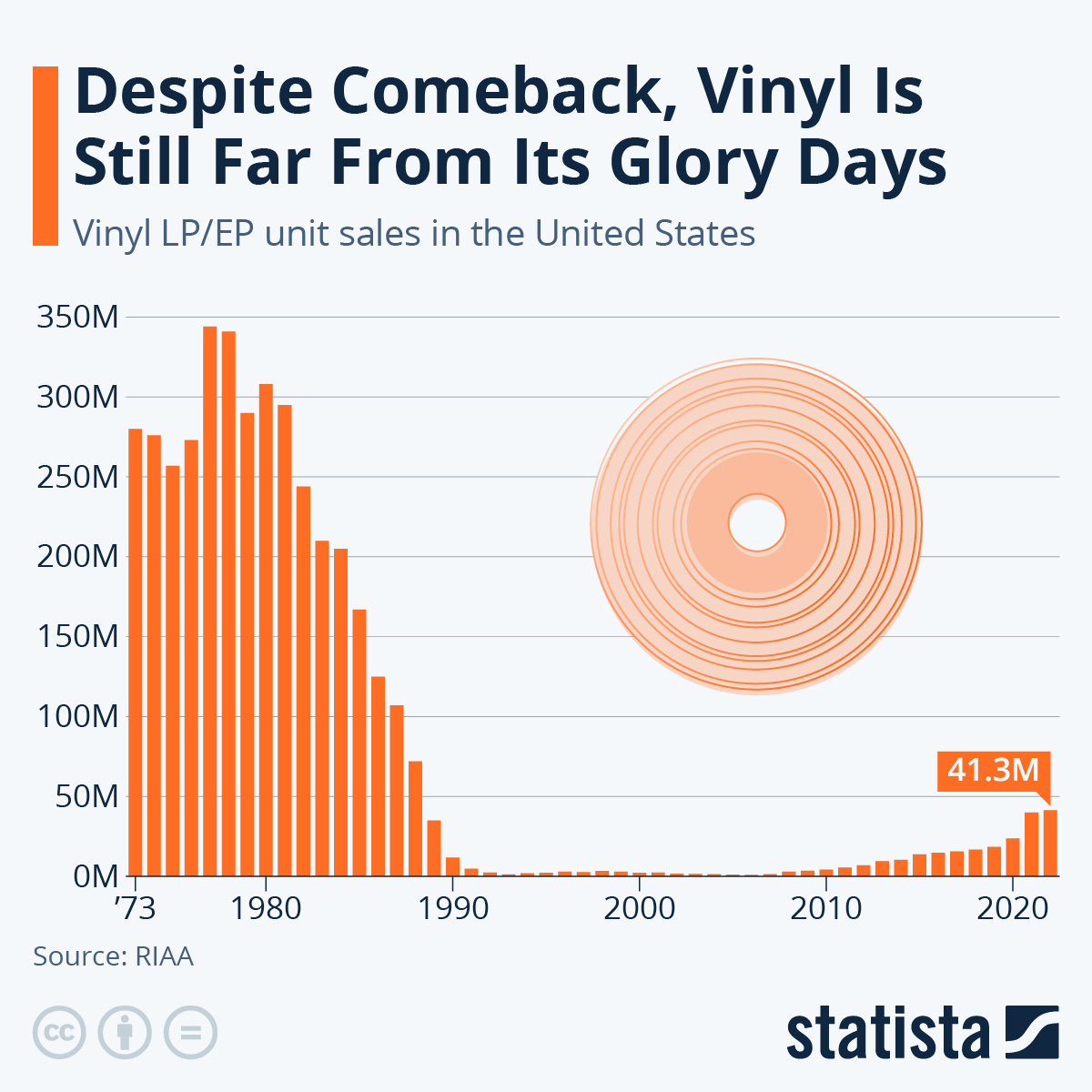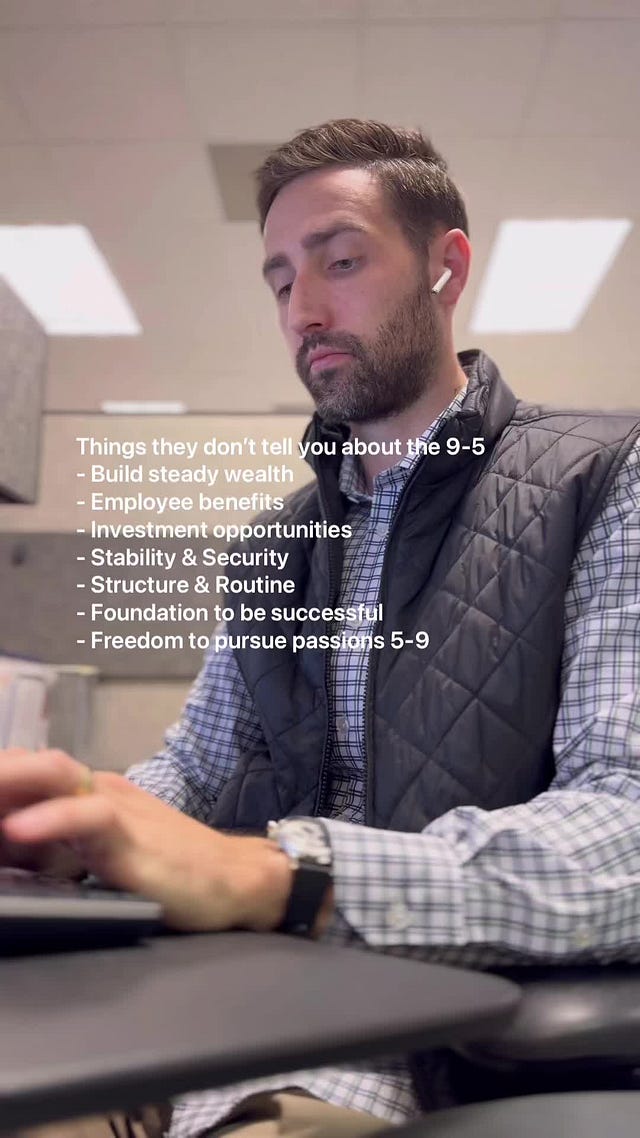The Human Medium is the Human Message
A 2x2 on the future of media and curation. Also: Complexity of DeFi in 2024, Single-Stair Multi-Family Buildings, and Jessy Lanza
I’m glad that I’m not the only one who misses old school human curation. For me, it’s more about wanting a connection moreso than valuing the actual thing being shared. I think this trend is accelerating. With generative AI and the ever-present algorithm that has sucked itself into every facet of our life, a part of the response to it will result in media that primes for its relationship to humans. In the future, if we can split media as predominantly human-made or predominantly AI-made, then human-made media will tilt towards being able to point to the humans that made it. In other words, in a divergence like this, the human/s will merge closer with their creations.
Cassidy Williams, in missing human curation, writes:
When I say “I don’t know where everyone went,” I know everyone’s out there surfing the web, of course, but it feels like it’s a different place now. When the algorithms are determining everything we should be seeing, it’s a much less personal internet. The “For You” pages of the world are right, I am interested in that content, but I’m not seeing it from my friends, or that one author I like, or that random blog I found when I was learning about an obscure hobby.
While the algorithm herded everyone into their own filter bubbles, the increasing exposure to programmatic experiences has removed the “third space”: a place not at home, or work, where humans used to mingle and bump into each other.
We’ve slowly engineered out random encounters in life, resulting in trusting Amazon reviews and getting it delivered to your door without seeing anyone vs talking to your uncle Jimmy who might know something and then asking the guy at the store for more information on the products. Dating has escaped friends-of-friends, offices, and bars to be behind swipes and the “apps”. Media is a recommender algorithm that produces content on the side to try to keep you on their platforms.
In response, I think we’ve started to see some of this trend change over the years.
It’s seen in the rise of cozy/cottage-core content. People simply deleting social media. The resurgence of physical media (vinyls in music resurging, and physical books selling the most, ever).
The pandemic boosted physical books, but it has been growing since 2012.
This TikTok describes some of this shift in video content towards slow authenticity:
To many in video content, this feels like a return to early, slow YouTube.
Not for everyone, but some of Sam Sulek’s videos are an hour long and it’s just slow, him talking, and going to the gym.
Although the algorithm is boosting his content, it’s all very not made for it. It’s not Mr. Beast.
In some instances, people are even enjoying just watching a normal guy do a 9-to-5.
We seem to rebuild a craving not just for connection, but also for serendipity we accidentally gave up by making our lives easier. It’s not necessarily about going offline, but recreating spaces that felt communal.
Alexandra Lange writes about a fan-fiction community called Coffee Shop Alternate Universe (AU). It’s fan-fic about the ideal, very human, very safe, serendipitous connections that comes from coffee shops.
In the past few years, our desire to participate in public life, and our yearning for unexpected encounters, has only increased, while the number of spaces in which to have either has shrunk. I’ve never written in a coffee shop myself and, in fact, I almost never sit in them for any length of time, but I value serendipity. The coffee shop provides options. Anyone might walk in—a celebrity as celebrity, not just a celebrity made wage worker in the alternative setting. Anything might happen—a job interview, a first date, a breakup—and it can happen at any time, from dawn opening, sleepy greeting between barista and baker, to late closing, the Hopper-esque loneliness of sweeping up.
…and later:
Meanwhile, my single friends tell me meeting people “on the apps” has only gotten worse, making the dream of a coup de foudre over cappuccino dreamier. The coffee shop is a slower space, where conversation trumps sex, and the dailiness of the need for caffeine offers the possibility of getting to know someone over time. All the little things that we judge, as humans—names, shoes, haircuts, manners, are on full display in the process of ordering coffee.
If this trend is happening: a retreat to cozy-core discords, authentic content, physical media, safe interactive spaces for serendipity, and more newsletters. Then. What happens now that generative media is here and how might it change how media is made and how it is consumed?
We can potentially plot this on 2x2 where we have human-made and LLM-made vs human-curated and algorithm-curated.
Top-left: Human-made and Human-curated
This was most of the past. Nowadays, it’s things like local culture for local things. A local music festival. Online, it’s newsletters, and sites focused on reviews of people that you explicitly follow. It’s group chat rooms, sharing things they made with each other. It’s old-school blogs. This quadrant will likely continue to increase as people crave local serendipitous culture as far away as possible from algorithmic feeds or AI-generated media in public spaces online.
It’s also possible that in a general backlash against AI media, people lump into anything algorithmic along with it: a desire to not want their life to be mediated by a machine anymore.
Top-right: Human-Made and Algorithm-Curated
These are spaces like CreativeTwitter (creatives sharing among themselves, aided by the algorithm). It’s YouTube and TikTok. BookTok is a great example. Physical books read by people who have large audiences from talking about books. I think this quadrant is often most at risk. Many creators have lost their audiences because the algorithms had changed or platforms had died. So, over time, many of these creators opt out of relying purely on the algorithm and move back to more familiar distribution models or go for newsletters (oh, hi).
It’s likely that anything human-made will move away from hiding all its collaborators. The 90s and early 2000’s megastars made it seem like insular geniuses was normal when in fact they all had mega teams involved in every aspect. As sort of a proof-of-not-using-AI, I can imagine things like books also surfacing and showing to the audiences that they had 1) an agent, 2) an editor, 3) a voice narrator, etc, etc alongside the author. Or in games, showing the designers, programmers, etc. It becomes as much about the people as the media itself. Marketing, say, a physical book, without seeing anything human nearby will just not happen. The human medium is the human message.
Bottom-Left: LLM-Made and Human-Curated
This is new and quite unique and probably where most LLM content will probably come from. The reason being: generative media is particularly adept at serving extensively long tail niches. The ability to generate just about any variation of anything that in the past would not have been able to pay for said media to be produced. This looks like people using generative AI to create inside jokes, like having it write lyrics about someone who likes corn, grew up in Stellenbosch, and once bumped his toe on October 3rd. Or, creating a visual for a fun inside joke or personal event. This media isn’t aided by algorithms because it’s too niche.
Bottom-Right: LLM-Made and Algorithm-Curated
I think this domain is one a lot of creators are most scared about. The idea that algorithms will pump out media, usurp the algorithms and result in there only being mechanistic and formulaic slop available to consume. In this domain, things we’ve seen here include popular derivatives that can jump away from its niche. Things like the Harry Potter x Balenciaga meme.
In here is also all the AI-driven ego filters. Those viral “make yourself a Disney character” templates.
In general, LLM-media will likely fill in the holes left by 1) media being expensive to produce, and 2) timely to produce (because the content is time-sensitive), and 3) too niche to provide for a certain market. In other words, LLM-media will come to serve a long-tail of content. Expansive fan-fiction universes.
I still honestly struggle to imagine good long-form content (such as a book or a film) made purely by one-shot AI. Maybe by continuous iterative generative AI. But, then, it’s equivalent to directing the process which in general requires know-how on how to tell a story. The distinction of generative AI should perhaps not be whether it uses it or not, but whether it’s a one-shot production vs it being a toolset among a range of other tools that still necessitate an understanding of how and why they need to be guided. Regardless, what becomes important is the ability for *any* media to find the humans to enjoy it. And so, there’s likely a future inflection point where having more humans on your project is actually beneficial because it means you start off with a higher likelihood of it being shared. If the extreme becomes that we may be able look at anything for cheap, then the differentiator will become who had made it. In other words, the human media is the human message. You can’t automate authenticity.
Bonus Content!
Phew. Been such a busy and full week for me catching up with friends, family, and the sunny South African weather with all the goodness it brings. Weirdly, while I generally would not prefer to be driving in general, I’ve enjoyed the longer, meandering drives where I can think and just process my feelings and emotions. This kind of downtime doesn’t naturally happen, which is why I replaced some of my time with walking and running after living in cities where I don’t have to drive a lot.
DeFi in 2024
While most of the world has kind of forgotten about DeFi, it’s grown more complex in different ways.
btw, I can attest that this isn’t satire. It’s all real. So yes, the reality of any sort of market activity on blockchains are getting increasingly granular, modularized, and protocolised. It does present an interesting future. If more of finance was as open as this, then we might actually have platforms more likely compete for reducing fees and costs.
Single-Stair MultiFamily
I've spoken about the unique issue in the USA where due to history and inertia, various multifamily units require two forms of egress, often leading to scenarios where stairs take up a good portion of a building. In smaller buildings, it can restrict the general size of a unit and reduces flexibility of arrangements.
This article gives a great history on where it stems from and why due to various innovations and reforms, it should be removed to help solve the housing crisis in the US (ht Devon). By Thesis Driven.
Without the requirement for a second stair, buildings can be laid out in a fundamentally more efficient way. With less vertical circulation, the circulation core can simply be repeated a few different times, with apartments of different sizes arrayed off of each core, potentially stretching from the front of the building to the back. If planners redraw zoning envelopes to accommodate thinner buildings, more bedrooms can be packed in less square footage, offering more affordable and competitive family-sized designs. With units that appeal more to families (in New York City, condo buildings average 1,189 gross sq. ft., compared to 838 sq. ft. for rentals) and reform of defect liability laws that drive insurance costs up for condo developers, America might even be able to bring its condo construction numbers up from historic lows.
Minting Models
There's always interesting second order emergent development that happens once something becomes a new broad based, open API, consumer action. There's been a trend spurred on by protocols like Zora, where minting anything creative is encouraged, allowing fans to essentially super-like and collect content across the web.
The next obvious step is for us to have our own open-source models that we train on these collections we are building.
I agree (I need to really change how I publish this newsletter somewhere this year). There's a whole host of interesting ideas here.
Jessy Lanza - Giddy
Totally adore this warm electronic ethereal track. Enjoy!
Hope you get to enjoy a sunset, folks! See you next week!
Simon









